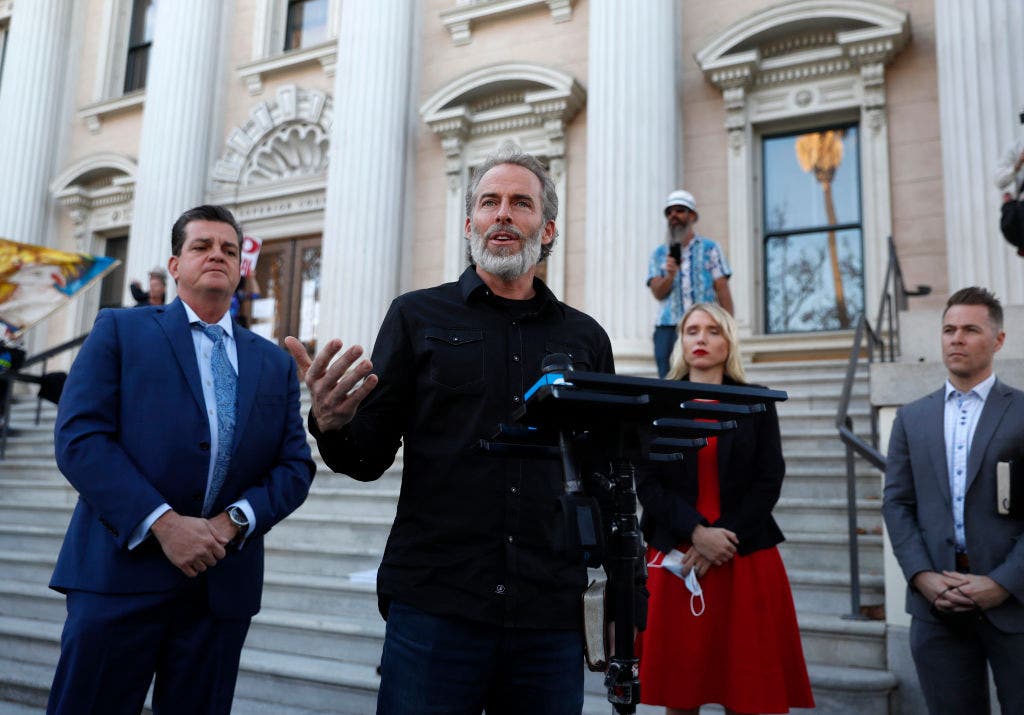Newsroom Survey Reveals Two Faces Of Local Change
Local Government
A Newsroom survey of 220 newly-elected mayors and councillors discloses a massive challenge to reconcile their plans for transport, housing and Three Waters with those of the Government
Down in Gore, 23-year-old Ben Bell met last night with the other candidates in his team for dinner at the popular local bar, Howl at the Moon. He ordered a $27 open steak sandwich, onion rings and fries – then watched as it got cold on the plate. His phone kept ringing; locals kept coming up to congratulate him.
Trailing the incumbent mayor by a narrow margin on Saturday’s preliminary election results, he had been delivered a shock on Sunday afternoon. An updated count gave him 2,346 votes to Tracy Hicks’ 2,333.
Today, Bell is on the brink of winning the district’s mayoralty. If the final results confirm his lead, he will join challengers in Whakatāne, Ōpōtiki, Waipa, Whanganui, Carterton, South Wairarapa, Wellington, Dunedin, Invercargill and Southland in toppling serving mayors. It’s a rout.
The 11 cities and districts that have rolled their mayors join another 20 councils whose incumbent mayors have retired, meaning they have new leadership too. Among them are Whangārei, Auckland, Rotorua Lakes, Nelson, Christchurch and Queenstown Lakes.
Survey: Councillors more economically right-of-centre than Parliament
With Southland mayor Gary Tong the last domino to fall, last night, the net effect is that 3.53 million New Zealanders have a new mayor this morning.
Thirty-one-year-old Moko Tepania is another young mayoral candidate who is waiting on special votes to confirm his victory in the Far North. At the last election, one Māori mayor was elected. Now, Tepania is set to be one of at least six Māori mayors.
He spent the evening with family last night, reluctant to speak publicly about his plans until his victory is confirmed. But his responses to a Newsroom survey highlight the different waves of change sweeping across New Zealand. He and Bell may both be fresh-faced and full of energy, but their politics are different. These disparities confirm that New Zealand voters wanted change – but they weren’t all voting for the same change.
Ahead of the election, Newsroom surveyed the candidates. Those survey results provide a unique insight into the voting intentions of 223 of New Zealand’s new mayors and councillors.
It shows three areas in which the country’s newly-elected mayors and councillors face a massive challenge to reconcile their plans with those of the Government. Those three areas are transport, housing and the Three Waters reforms.
The results also confirm that demographic change remains slow. The breakdown of candidates’ gender, age and ethnicity showed that local elections remained dominated by white, middle-aged males.
Survey: Age and gender of elected mayors and councillors
And that has only been worsened by how voters have cast their ballots. The final results show that women were more likely to win a tick than men – but the most pronounced bias remained in favour of candidates aged 56 to 75 years.
Despite Bell and Tepania’s strong results in Gore and the Far North, their success is the exception that proves the rule. Down in conservative Southland, Bell regards himself as socially right-of-centre. Tepania sees himself as socially to the left: he wants to build relationships with communities, business, iwi, hapū and with central government.
But – and here’s the challenge for Jacinda Ardern’s administration in dealing with the new breed of mayors and councillors – both kick back at perceived central government meddling in local communities. Economically, both identify themselves as well to the right.
And that’s the case for mayors and councillors nationwide. Unlike the left-leaning make-up of Parliament, where Labour and the Greens comprise 62 percent of members, local government leans is the opposite way. The survey shows 63 percent of respondents position themselves as economically right-of-centre.
A handbrake on transport initiatives
What is immediately apparent is that the ever-more-beleaguered Local Government NZ will struggle to present a united face to central government on transport priorities.
The 220-plus newly-elected mayors and councillors were given the opportunity to nominate as many transport priorities as they wished. The troubling result was that roads and public transport were tied for first place, winning just under 63 percent of the vote each. Consistent with the pace of travel, cycling trailed a little behind, and walking a bit further still.
Our two new, young mayors – perhaps reflective of their semi-rural districts – both nominate roads as a priority, with public transport. “Rural roads need investment,” says Bell, “and small-scale public transport.”
Implicitly, though, they acknowledge the challenges they face in paying for their new infrastructure. Tepania has campaigned on both increasing social spending and reducing rates, so he’s caught in somewhat of a bind. His solution, he says, would be to increase borrowing, raise user charges like parking fees, and enter into public-private partnerships.
Survey: How new councillors will vote on rates and borrowing
Bell doesn’t have the luxury of increasing borrowing – Gore District Council is already close to its borrowing cap, he says.
So he says there will be no new social spending and no new infrastructure investment on his watch, except where that investment can be bankrolled through public-private partnerships.
The same conundrum is faced by incoming mayors and councillors nationwide. Some like new Wellington mayor Tory Whanau are anxious to accelerate investment in initiatives like cycle lanes – but it seems many more are askance.
Already, Auckland Transport chair Adrienne Young-Cooper has read the writing on the wall and quit, after new mayor Wayne Brown said he would replace the directors of all the major council-controlled agencies, starting with Auckland Transport. The council-controlled company had been seen as moving relatively quickly on climate initiatives like replacing its diesel buses, to the extent that it had outpaced previous mayor Phil Goff and his council.
Now it’s become apparent that in the biggest cities of Auckland and Christchurch, in particular, the new mayors are ready to pull the handbrake on some low-carbon transport initiatives.
Pulling the plug on Three Waters reforms
There are few surprises here in the survey findings: 76 percent of respondents oppose the Government’s Three Waters reforms.
Both Tepania and Bell count themselves in that number.
Both would like to see more responsibilities devolved back to councils – but Bell says there’s only one way to that: “We need to move towards working more effectively with central government so that new responsibilities get funded, rather than just dumped on councils to implement.”
Survey: How new councillors will vote on spending
For Bell, this is a chance for councils to go “back to basics”. And he knows a little about the nitty-gritty of how the council works: his mother Rebecca Tayler was Gore’s general manager of regulatory and community services, until last year.
He opposes “flashy new projects” like Gore’s new $7.7 million library, or the Hokonui Moonshine Museum and Distillery. Instead, he thinks councils should do the “core council services” like maintaining horizontal infrastructure.
“It’s more about where the focus is, in terms of spending and allocating money,” he tells Newsroom. “So it would be relocating it from these very expensive, flashy vanity projects, and investing in stuff that isn’t pretty. So that’s your pipes in the ground, that’s your rural roads, that’s your recycling, stuff that councils should be dealing with.”
He accepts that Gore has done a poor job of maintaining its Three Waters infrastructure.
“Most of our pipes haven’t been explored, let alone knowing the actual condition of them. So we’re in a huge amount of trouble with this,” he says. “We’re going to need central government help. But I do think that the current reform and current agenda isn’t suitable for us or the rest of the country.”
Housing
This is perhaps the best news for the Labour Government: 57 percent of survey respondents say they support greater intensification, albeit with the odd caveat.
Another 11 percent would develop the fringes of their towns in what many planners criticise as urban sprawl. Another 29 percent opt for some combination of maintaining the status quo, protecting character areas, or reducing intensification.
Survey: How new councillors will vote on key policies
Where it gets more complicated is when residential planning is combined with adaptation to climate change – specifically, managed retreat. While most new mayors and councillors are broadly supportive of identifying the risk to a residential property on its LIM (land information memo), they are less enthusiastic about accelerating the pace of retreat from those at-risk areas.
Ben Bell is one who says that it “depends on the risk” as to how proactive the council needs to be on managed retreat. His response – and he’s not alone – will cause some in government and the insurance industry to pull their hair out in frustration. From their perspective, the assumption that inland areas needn’t worry about managed retreat is a blinkered one.






